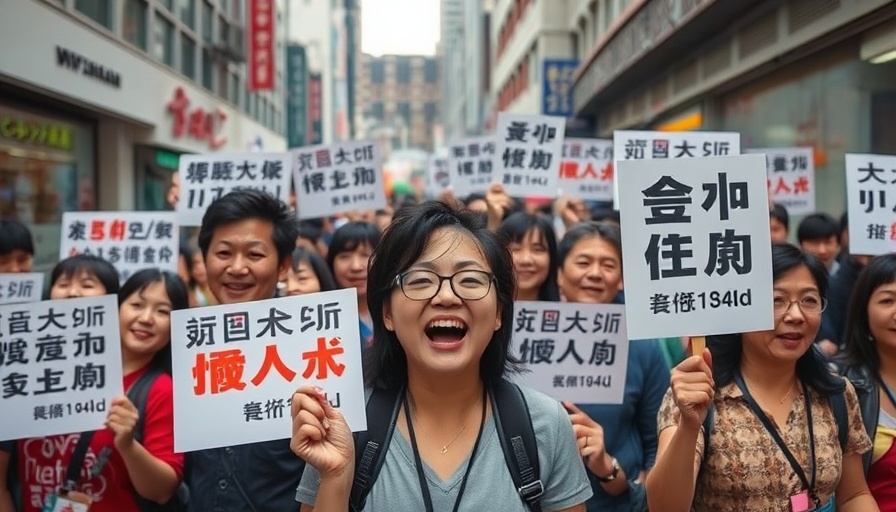
Escalating Tensions: A Clash at the Thai-Cambodian Border
As the sun rose on July 25, 2025, a tense standoff brewed between Thailand and Cambodia, with border clashes intensifying and escalating into accusations of war. The ongoing conflict marks the deadliest fighting between these neighboring Southeast Asian nations in over a decade, drawing international attention as over 100,000 people are forced to flee their homes amidst the violence.
A Grim Humanitarian Crisis
The recent clashes have left a severe toll on civilian lives. Reports indicate that at least a dozen civilians and six soldiers have died on the Thai side, with Cambodia also experiencing fatalities. Many of those displaced have sought refuge in makeshift shelters such as temples and community buildings, as they are forced to abandon their livelihoods.
“I feel very sad about this,” shared Buakam Sangphet, a 53-year-old rice farmer from Surin Province in Thailand. “It should not have happened to countries that are next to each other. We have been friendly, but now the relationship is shattered.” His sentiments speak to the personal losses felt by individuals who now watch their communities unravel due to violence.
The Role of Government Responses
In the face of escalating violence, Thailand’s acting prime minister, Phumtham Wechayachai, has issued stark warnings that the situation could develop into a larger conflict. With martial law declared in several districts bordering Cambodia, military forces have been mobilized, and heavy artillery deployments signal a serious escalation. “For now, it’s just clashes using heavy weaponry,” he remarked, elucidating the seriousness of the conflict while potentially overlooking the urgent humanitarian needs arising from the conflict.
Cambodian Prime Minister Hun Manet has accused Thailand of undermining a cease-fire arrangement that had been in the works, further complicating the diplomatic relationship. His assertions highlight the fragility of dialogue between nations that have faced decades of border disputes.
Historical Context and Background
This rift is not an isolated incident but rather a continuation of longstanding tensions between Thailand and Cambodia over border demarcations. The temple of Preah Vihear, claimed by both nations and recognized by UNESCO as a World Heritage site, has historically been a flashpoint for disputes.
Understanding the historical grievances that fuel this ongoing conflict is essential to grasping the current situation. Both nations have a complex shared history shaped by colonial legacies and nationalistic sentiments, impacting their diplomatic interactions over the years.
Broader Implications for Southeast Asia
The violence at the borders of Thailand and Cambodia extends beyond bilateral tensions and resonates throughout Southeast Asia. As ASEAN member states aim for regional stability and economic cooperation, the exacerbation of hostilities poses risks not only to the involved nations but also to collaborative regional initiatives.
Strategically, the greater concern lies in the potential for conflict to disrupt trade, tourism, and regional alliances. Countries like Malaysia, which have acted as mediators, fear the backlash of destabilization in neighboring nations, potentially leading to wider unrest.
Future Predictions and Opportunities for Peace
Looking ahead, the international community watches closely for diplomatic interventions that might curtail the violence. Observers speculate that regional coalitions could leverage diplomatic pressure to facilitate a ceasefire and promote negotiations aimed at addressing underlying grievances.
While the immediate conflict represents a dramatic escalation in hostilities, it also presents a critical opportunity for peace, particularly if both nations commit to dialogue and seek to address the humanitarian crisis precipitated by the violence.
The Role of International Community and NGOs
As local communities endure the impact of warfare, the international community must prioritize humanitarian assistance. Non-governmental organizations (NGOs) and international bodies can play a pivotal role in ensuring that aid reaches those displaced, emphasizing the importance of providing support rather than exacerbating tensions.
A coordinated response involving diplomatic pressure and humanitarian aid is critical in charting a path toward peace. The world's attention is on Thailand and Cambodia, urging leaders to reconsider their paths to prevent the loss of life and promote a cooperative future.
Conclusion
The clashes at the Thailand-Cambodia border highlight the delicate interplay of historical grievances, national pride, and humanitarian needs. As tensions continue to rise, the impact on local communities lays bare the urgent need for conflict resolution and the commitment to peace by leadership on both sides. Amidst the tragedy, there remains hope for diplomatic dialogue and the restoration of friendly relations that once characterized the bond between two neighboring nations.
 Add Row
Add Row  Add
Add 




Write A Comment